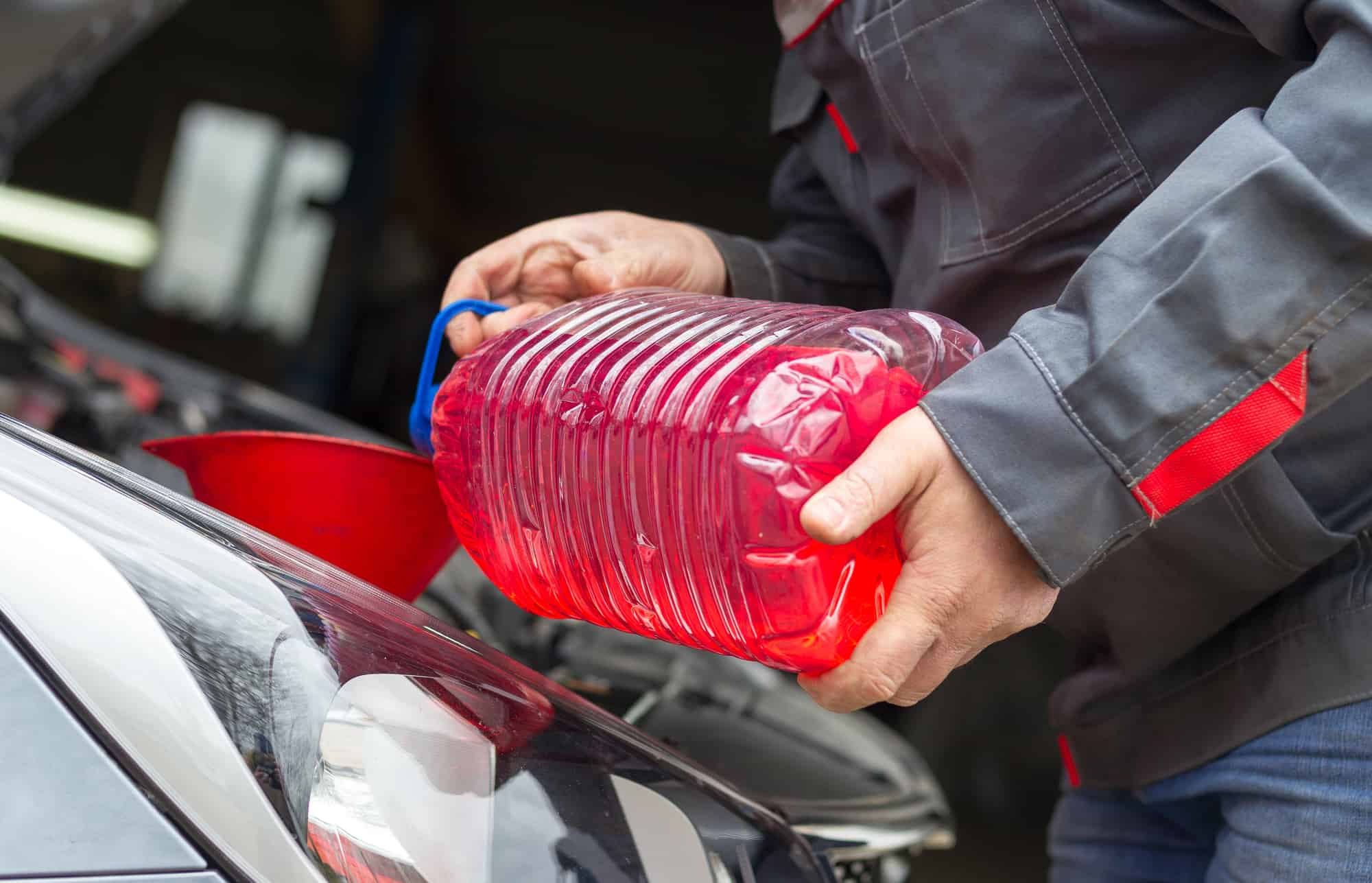Transmission fluid is an essential component in maintaining the proper function and performance of a car’s transmission. However, adding too much fluid can lead to significant issues and potential damage to the transmission components.
Symptoms of too much transmission fluid include difficulty shifting gears, delayed or rough shifting, transmission slipping, transmission overheating, and leaks. Excess fluid can cause the transmission to become over-pressurized, which can damage the seals and gaskets and lead to leaks.
Transmission fluid not only lubricates moving parts, but it also serves as a coolant and helps transmit power from the engine to the wheels. If left unaddressed, these symptoms can cause serious damage to the transmission and affect the performance and safety of the vehicle.
In this article, we will discuss the symptoms of too much transmission fluid and what you should do if you suspect that your vehicle’s transmission is overfilled.
Symptoms Of Too Much Transmission Fluid (7 Of The Most Common)
When there is too much transmission fluid in your vehicle, it can lead to various problems and costly repairs along with performance, safety, and longevity issues for the transmission and the engine.
One of the main concerns is transmission damage. Too much fluid can cause the transmission to become over-pressurized and damage internal components such as seals and gaskets.
This can lead to transmission failure and the need for expensive repairs or replacement. Overfilling the transmission can also cause leaks, which can lead to damage of the transmission if it is not lubricated properly.
Too much fluid can cause the transmission to slip gears or delay shifting, affecting the vehicle’s acceleration and performance and can lead to overheating, which can cause further damage to the transmission and other components of the vehicle.
To avoid these issues, it is important to recognize the symptoms early so you can address the issue and prevent further damage.
Here are the most common symptoms of too much transmission fluid:
Symptom 1. Too Much Fluid On Dipstick
If your transmission is not sealed and its possible to top up the fluid then checking the transmission fluid dipstick is a simple way to diagnose excess fluid. If the fluid level is significantly above the “Full” mark on the dipstick, it indicates that your vehicle has too much transmission fluid.
When the transmission is overfilled, the fluid level can exceed the maximum level on the dipstick, which can cause the fluid to foam and aerate.
This can lead to erratic shifting and slipping gears, as well as transmission overheating and damage to internal components.
Too much fluid on the dipstick can also cause the fluid to overflow and leak out of the transmission.
Symptom 2. Transmission Overheating
Excess transmission fluid can cause the transmission to overheat, as it creates extra pressure inside the unit that can lead to fluid leakage.
Adding too much transmission fluid can lead to the transmission overheating due to the excess fluid causing the transmission to become over-pressurized. When the transmission is overfilled with fluid, it can cause the fluid to foam and aerate and this can affect it’s ability to lubricate and remove heat efficiently.
The excess fluid can also cause the transmission to work harder than it needs to, which can generate additional heat and cause the transmission to overheat.
The transmission fluid is responsible for keeping the transmission cool, and when there is too much fluid, it can affect the fluid’s ability to move around the transmission properly, leading to overheating.
Symptom 3. Slipping Transmission
A common symptom of too much transmission fluid is a slipping transmission. This occurs when the transmission has difficulty engaging or maintaining gears, often leading to a noticeable loss of power and poor vehicle performance.
As previously explained, overfilling the transmission with fluid can cause the fluid to foam and aerate, which can reduce its ability to lubricate and cool the transmission components. This can cause the transmission to slip gears or delay shifting, leading to a slipping transmission.
Too much fluid can also put extra pressure on all of the moving parts inside the transmission, causing the transmission clutches to slip when it is trying to change gears. This can result in the engine revving without the vehicle moving forward, or the transmission slipping out of gear from time to time.
Symptom 4. Damage To Transmission Valves
Overfilled transmission fluid can cause excessive pressure within the system, leading to damage in the transmission valve body. This can result in erratic shifting and decreased performance.
The transmission valves are responsible for controlling the flow of fluid through the transmission and directing the pressure to the appropriate clutches and bands.
When the transmission is overfilled with fluid, it can reduce its ability to lubricate and cool the transmission components. This can cause the valves to stick, which can disrupt the flow of fluid through the transmission and lead to erratic shifting or slipping gears.
The increased pressure caused by excess fluid can damage the valves and other internal components. The transmission valves are designed to operate within a specific pressure range, and when the pressure exceeds this range, it can cause the valves to malfunction or become damaged.
Too much fluid can cause the transmission to work harder than it needs to, which can generate additional heat and cause the transmission to overheat. This can cause further damage to the transmission valves and other components of the transmission.
Symptom 5. Trouble Selecting Gears
Excessive transmission fluid can make it difficult for your vehicle to shift gears. This can manifest as delayed or inconsistent shifting, or the inability to select the correct gear altogether.
The transmission is a complex system of gears, clutches, and bands that work together to transfer power from the engine to the wheels. Too much fluid can cause increased internal pressure in a transmission which can lead to trouble changing gears by causing the transmission to become over-pressurized.
When too much transmission fluid is added to the system, it can cause the fluid to degrade which can reduce its lubrication properties and lead to trouble changing gears.
Excess fluid can cause leaks that can cause the transmission to work harder than it needs to, leading to trouble changing gears and causing the gears to slip or delay shifting.
If there is overheating this can cause the transmission to expand and contract, affecting the alignment of the gears and making it difficult to select the correct gear and this can lead to further damage to the transmission.
Symptom 6. Noisy Transmission
Too much transmission fluid can lead to increased noise from your vehicle’s transmission, such as whining or humming sounds. These noises are typically more prominent when the engine is running and the vehicle is in gear.
Excess transmission fluid will lead to increased pressure and increased internal pressure in a transmission can lead to a noisy transmission due to the excess pressure causing the transmission to work harder than it needs to.
The excess pressure can cause the gears to grind against each other, creating a grinding or whining noise. The noise may be more noticeable when shifting gears or accelerating, and can indicate that the transmission is under stress and may be experiencing damage.
The increased internal pressure can also cause the transmission to overheat, which can further exacerbate the problem.
Symptom 7. Leaking Transmission Fluid
When the transmission fluid level is too high, it may result in leaks due to excessive pressure buildup when driving.
Increased internal pressure in a transmission can lead to transmission leaks by causing the seals and gaskets to become damaged or fail allowing fluid to leak out of the transmission.
This can create a hazardous condition for other drivers and damage the environment. The transmission fluid can also leak onto other parts of the engine and vehicle, causing further damage and increasing the risk of a fire if it overheats.
How Can Too Much Transmission Fluid Be Added?
Some vehicles have open transmission fluid systems that can be topped up. However, it’s easy to overdo it when adding fluid if you are not careful. Here are a few ways you can end up with too much fluid in the transmission:
- Misreading the dipstick: If the dipstick is not inserted correctly or read accurately, this can result in an overestimation of how much fluid is needed. Always make sure to check the fluid level according to the vehicle’s owner manual and with the engine running at operating temperature.
- Improperly servicing the transmission: During routine maintenance, a mechanic may accidentally overfill the transmission system. It is important to choose a reputable garage for transmission work to ensure proper procedures are followed.
- Using the wrong type of fluid: Different vehicles require different types of transmission fluid. Using a fluid with the wrong viscosity or additives can damage the transmission and if it doesn’t flow properly within the transmission may result in an overfilled condition.
- DIY mistakes: While some enthusiasts choose to work on their own vehicles, transmission maintenance can be complex, and it is easy to make mistakes. Overfilling can occur when an inexperienced individual attempts to service their transmission without proper training.
To prevent overfilling a transmission, it is crucial to follow the manufacturer’s recommendations for service intervals, fluid types, and checking procedures to maintain optimal transmission health.
Can Too Much Transmission Fluid Cause Damage?
Yes, having too much transmission fluid in your vehicle can cause damage to various components. When the fluid level exceeds the recommended amount, it can create undue pressure on seals, gaskets, and other parts within the transmission system.
High fluid levels can also cause the fluid to foam, which reduces its effectiveness in lubricating and cooling the transmission. This foaming can lead to transmission overheating and premature wear on internal components, ultimately affecting the performance and longevity of the system.
Some potential issues that may arise due to overfilled transmission fluid include erratic shifting of gears, leaking transmission fluid, increased transmission temperature and damage to seals and gaskets.
What Next – How to Check and Top Up Transmission Fluid
It’s a good idea to check the transmission fluid level regularly if your vehicle is fitted with a transmission dipstick and it’s not a ‘sealed for life’ transmission.
Here are some steps to ensure accurate readings:
1. Park your vehicle on a level surface and engage the parking brake. Allow the engine to run until it reaches its normal operating temperature. This allows the transmission fluid to circulate and heats it up, providing an accurate reading.
2. With the engine running, shift the transmission through all the gears (Park, Reverse, Neutral, Drive) and then return to Park. Keep your foot on the brake at all times while cycling through the gears.
3. Ensure the engine is still running and open the hood of your vehicle. Locate the transmission fluid dipstick, which is usually near the back of the engine or connected to the transmission housing. It is often labeled “transmission” or “trans.” and is sometimes a bright color, such as red or yellow. If you are unsure of its location, refer to your vehicle’s owner manual.
4. Remove the dipstick and wipe it clean with a lint-free cloth or paper towel. Re-insert the dipstick fully and then remove it again to check the fluid level.
5. Observe the fluid level on the dipstick. The fluid should be between the “full” and “low” marks on the dipstick. If the fluid level is low, add fluid slowly, checking the level frequently until it reaches the correct level. Compare the fluid level to these markings to determine if the level is within the appropriate range.
When checking the fluid level, also take note of the fluid’s color and consistency. Healthy transmission fluid should be translucent reddish-brown and free of debris.
If the fluid appears dark, burnt, or thick, this might indicate a problem and a potential need for a fluid change or other maintenance actions.
Can Too Much Transmission Fluid Cause a Leak?
Yes, too much transmission fluid can cause a leak. Overfilling can lead to high pressure and damage the transmission seals. This can result in costly transmission leak repair costs. It’s essential to maintain the correct fluid levels to prevent leaks and costly repairs.
How To Fix An Overfilled Transmission
- Check the fluid level: Check the fluid level by removing the transmission dipstick and wiping it clean with a lint-free cloth or paper towel. Reinsert the dipstick and remove it again to check the fluid level. If the fluid level is above the “full” mark, the transmission is overfilled.
- Drain the excess fluid: There are several ways to drain the excess fluid from the transmission. One common method is to remove the transmission pan and drain the excess fluid into a container. Another method is to use a fluid pump to remove the excess fluid through the transmission dipstick tube.
- Check the fluid level again: Once the excess fluid has been drained, recheck the fluid level using the dipstick. The fluid level should be between the “full” and “low” marks on the dipstick.
- Test drive the vehicle: Start the engine and drive the vehicle for a few minutes to circulate the fluid. Check the fluid level again and add more fluid if necessary.
FAQs
1. How To Know If Your Transmission Fluid Is Low
To check the transmission fluid level, locate the transmission dipstick and remove it from the transmission. Wipe the dipstick clean with a rag, reinsert it into the transmission, and remove it again. Check the fluid level on the dipstick; if the fluid level is below the recommended level, it may be necessary to add more fluid.u003cbru003eThere are also several signs that your transmission fluid may be low, including:u003cbru003e1. Difficulty shifting gears: Low transmission fluid can cause the gears to slip or delay shifting, making it difficult to shift gears or causing the gears to grind.u003cbru003e2. Transmission slipping: Low transmission fluid can cause the transmission to slip gears, which can result in the engine revving without the vehicle moving forward.u003cbru003e3. Unusual noises: Low transmission fluid can cause the transmission to make unusual noises, such as whining or grinding sounds.u003cbru003e4. Transmission overheating: Low transmission fluid can cause the transmission to overheat, which can lead to damage to the transmission and other components of the vehicle.u003cbru003e5. Fluid leaks: Low transmission fluid can cause leaks in the transmission, which can lead to further damage to the vehicle and create a hazardous condition for other drivers.u003cbru003e
2. Is a quart over too much transmission fluid?
Adding a quart over the recommended amount of transmission fluid for your vehicle can be considered too much transmission fluid. Most cars take about 4 to 10 quarts of transmission fluid, but some passenger vehicles can take as much as 17 quarts. However, the exact amount of transmission fluid that is considered too much can vary depending on the make and model of the vehicle.
3 How much transmission fluid should you add to top off?
The amount of transmission fluid you should add to top off your vehicle’s transmission depends on the make and model of the vehicle. The exact amount of fluid needed to top off the transmission can be found in the vehicle owner’s manual or by consulting a repair manual for the specific make and model of the vehicle.u003cbru003eIn general, most passenger cars need from 4 to 10 quarts of transmission fluid. However, it is important to add the fluid in small increments and check the fluid level frequently to ensure that the correct amount of fluid is added. u003cbru003eOverfilling the transmission with even a small amount of fluid can cause problems, so it is important to be careful when adding fluid.u003cbru003eTo add transmission fluid, locate the transmission dipstick and remove it from the transmission. Wipe the dipstick clean with a rag, reinsert it into the transmission, and remove it again. Check the fluid level on the dipstick; if the fluid level is below the recommended level, add the fluid in small increments, checking the fluid level frequently until the correct amount of fluid is added
As an Amazon Associate we earn from qualifying purchases.









If I’ve already noticed that my car is having difficulty shifting gears and seems to be slipping more frequently, does this mean the damage is irreversible, or is there a chance that correcting the fluid level could improve the situation?
Given the importance of correct transmission fluid levels, how would I distinguish between transmission issues caused by overfilling and those due to using the incorrect type of fluid in my car?